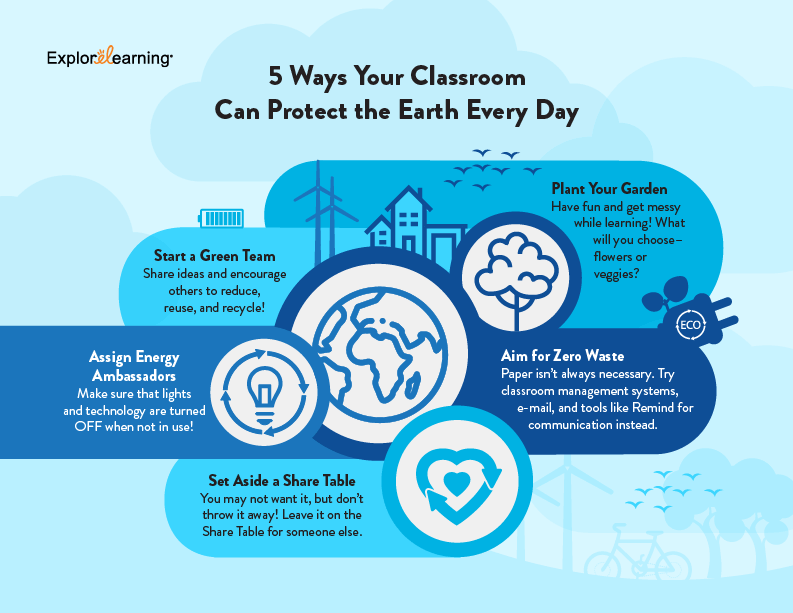Earth Day in Your Classroom

What is Earth Day?
As early as the 1960s, Americans were concerned with environmental issues. There was increasing awareness about pollution, conservation, and preserving natural resources for future generations. Wisconsin Senator Gaylord Nelson was among the first elected officials to bring the cause to the government. Did you know the first Earth Day was held on April 22, 1970? The celebration went global in 1990. And it’s just as important today!
In the United States, Earth Day is April 22 each year. The rest of the world also celebrates on April 22 or the spring equinox. The goal is to raise awareness and honor achievements, focusing on changing attitudes into habits that invest in our planet.
Why does it matter?
We are the caretakers of the planet. Every living thing benefits from the steps we take to protect Earth. The goal is to correct and even prevent more damage to it. But for all the positive steps in the right direction, there are still many left to take. Teaching your kids the importance of environmental protection and conservation is vital for the future of our planet. Start the conversation with age-appropriate facts about the environment and climate to build overall awareness and respect that will carry them into adulthood.
Earth Day is perfect for teaching your students essential concepts like going green. It’s also an excellent way to build skills and confidence while developing their sense of personal responsibility. So shine a spotlight on how individual actions affect the planet and simultaneously build respect.

Earth Day activities to inspire your students
Ready for some ideas? Take a look at these Earth Day activities for your classroom.
- Take a nature walk- One of the simplest ways to connect with nature is to get outside!
- Rethink basic supplies- Use the backs of papers. Save scraps for art projects. Make sure things like markers and pens are truly out of ink before opening new packs. Tear unused paper from spiral notebooks to save for future projects.
- Reduce, reuse, and recycle at lunch- Say no to paper straws. Use reusable lunch containers, utensils, and water bottles.
- Forget the cup and spoon- Treat your class to ice cream from a cone. No waste and a yummy treat!
- Add plants to the classroom- Plants are nature’s air purifiers!
- Adopt an animal- Conservation also involves animals!
- Be energy aware- When natural light shines through the windows, the lights stay off! Power down technology when not in use.
- Watch the water usage- Remind students to limit the amount of running water when washing hands in the bathroom. Discuss with students ways to save water at home, like limiting time in the shower or while brushing teeth. Brainstorm other ways to conserve water.
- Think before you trash- Consider ways to repurpose or recycle before throwing things away. If it is truly trash, dispose of it properly.
- Post it- Choose Earth Day topics to research and design a poster that summarizes the information to display all month (or school year) long!
- Take a deep dive into Earth- Make sure students understand the history and features of the planet through research and interactive activities, like those from Science4Us and Gizmos.
- Go virtual- You may not be able to take your students to the Amazon Rainforest or into space, but virtual field trips or career days are a great way to bring the outside world into your classroom.
- Visit National Parks- No road trip necessary! Log on for virtual tours and live webcams.
- Get creative- Make Earth Day art from recyclable materials.
- Read and write- Bring ELA into the discussion. Read books and write stories or poetry about Earth Day. Challenge students to make word searches or crossword puzzles with environmental themes.
Don’t stop with one day! Continue to promote environmental protection and earth conservation in your classroom every day!

Sign up to get the latest updates from ExploreLearning via occasional email.